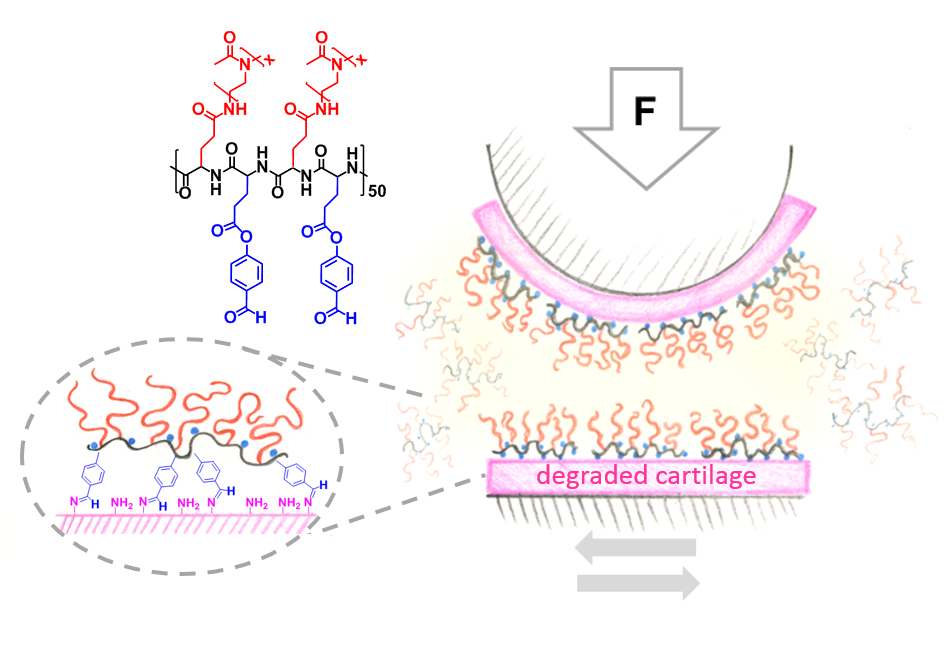Hairy, Lubricious and Tissue-Reactive Polymers
A team of researchers from the Department of Materials, coordinated by Dr. Edmondo M. Benetti and Prof. Marcy Zenobi-Wong (D-HEST), developed an injectable, synthetic formulation for the treatment of cartilage degeneration during osteoarthritis. This takes inspiration from the lubricating properties of polymer brush interfaces, which are structurally similar to synovial bio-lubricants present in the articular joint.
The researchers of D-MATL designed a series of graft-copolymers that selectively bind to the degraded cartilage surface, where collagen and other proteins are exposed, passivate the tissue surface through the formation of a uniform polymer brush nano-film, and effectively restore the lubrication properties of the native cartilage. The composition of the graft-copolymers features poly-2-methyl-2-oxazoline (PMOXA) as the main component, which is an emerging polymer for the replacement of poly(ethylene glycol) (PEG)-based formulations in a variety of biomedical and biotechnological applications. The capability of assembling on collagenous tissues makes the proposed graft-copolymers potential surface-modifiers for other tissue types (e.g. corneas), on which polymer brush nano-assemblies could provide protection against protein adsorption and/or enzymatic attack, and enhance the lubricating properties of the tissue interface. You can read the work of Dr. Benetti and his colleagues on external pageACS Nanocall_made.
Nanoassemblies of Tissue-Reactive, Polyoxazoline Graft-Copolymers Restore the Lubrication Properties of Degraded Cartilage
Giulia Morgese, Emma Cavalli, Mischa Müller, Marcy Zenobi-Wong, and Edmondo M. Benetti
ACS Nano Article ASAP, external pageDOI:10.1021/acsnano.6b07847call_made

